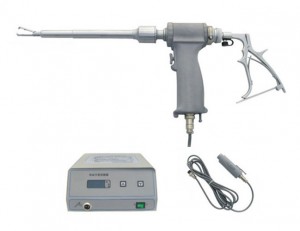 On April 17, 2014, the U.S. Food and Drug Administration (FDA) issued a safety communication and an updated safety communication on November 24, 2014, discouraging doctors from using Laparoscopic Uterine Power Morcellation in Hysterectomy and Myomectomy procedures. Power Morcellators are medical devices used to remove uterine fibroids in women, such as removing the uterus (hysterectomy) or removing uterine fibroids (myomectomy). However, because of the risk of spreading unsuspected, undiagnosed cancerous tissue throughout the abdominal cavity and beyond the uterus with the use of these surgical instruments, the FDA has issued two safety communications to Health Care Professionals.
On April 17, 2014, the U.S. Food and Drug Administration (FDA) issued a safety communication and an updated safety communication on November 24, 2014, discouraging doctors from using Laparoscopic Uterine Power Morcellation in Hysterectomy and Myomectomy procedures. Power Morcellators are medical devices used to remove uterine fibroids in women, such as removing the uterus (hysterectomy) or removing uterine fibroids (myomectomy). However, because of the risk of spreading unsuspected, undiagnosed cancerous tissue throughout the abdominal cavity and beyond the uterus with the use of these surgical instruments, the FDA has issued two safety communications to Health Care Professionals.
Uterine fibroids are noncancerous growths that develop from the muscular tissue of the uterus. Most women will develop uterine fibroids (leiomyomas) at some point in their lives, although most cause no symptoms. In some cases, however, fibroids can cause symptoms, including heavy or prolonged menstrual bleeding, pelvic pressure or pain, and/or frequent urination, requiring medical or surgical therapy.
Many women choose to undergo laparoscopic hysterectomy or myomectomy because these procedures are associated with benefits such as a shorter post-operative recovery time and a reduced risk of infection compared to abdominal hysterectomy and myomectomy. Many of these laparoscopic procedures are performed using a Power Morcellator medical device.
According to an FDA analysis of currently available data, it is estimated that 1 in 350 women undergoing hysterectomy or myomectomy for the treatment of fibroids is found to have unsuspected uterine sarcoma, a type of uterine cancer that includes leiomyosarcoma. If laparoscopic power morcellation is performed in women with unsuspected uterine sarcoma, there is a risk that the procedure will spread the cancerous tissue within the abdomen and pelvis, significantly worsening the patient’s likelihood of long-term survival.
In response to the FDA’s safety communications, in July 2014, Johnson & Johnson (J&J), the world’s largest seller of health care products, suspended all worldwide sales and distribution of power morcellators and ordered a voluntary market withdrawal through its power morcellator manufacturing unit, Ethicon. In its voluntary market withdrawal, J&J noted, “the risk-benefit assessment associated with the use of these devices in hysterectomy and myomectomy procedures for removing fibroids remains uncertain.”
Lawsuits have now been filed against the makers of some power morcellation devices, alleging women were harmed by the use of the devices. The lawsuits allege the use of a morcellator device resulted in an aggressive cancer—leiomyosarcoma—spreading throughout the patient’s body. The lawsuit alleges that Ethicon—a division of Johnson & Johnson—knew or should have known about the risk of a morcellation device spreading cancer in the patient’s body, but failed to warn about that risk.
References:
- FDA April 17, 2014 Safety Communication http://www.fda.gov/MedicalDevices/Safety/AlertsandNotices/ucm393576.htm
- FDA November 24, 2014 Safety Communication http://www.fda.gov/MedicalDevices/Safety/AlertsandNotices/ucm424443.htm




